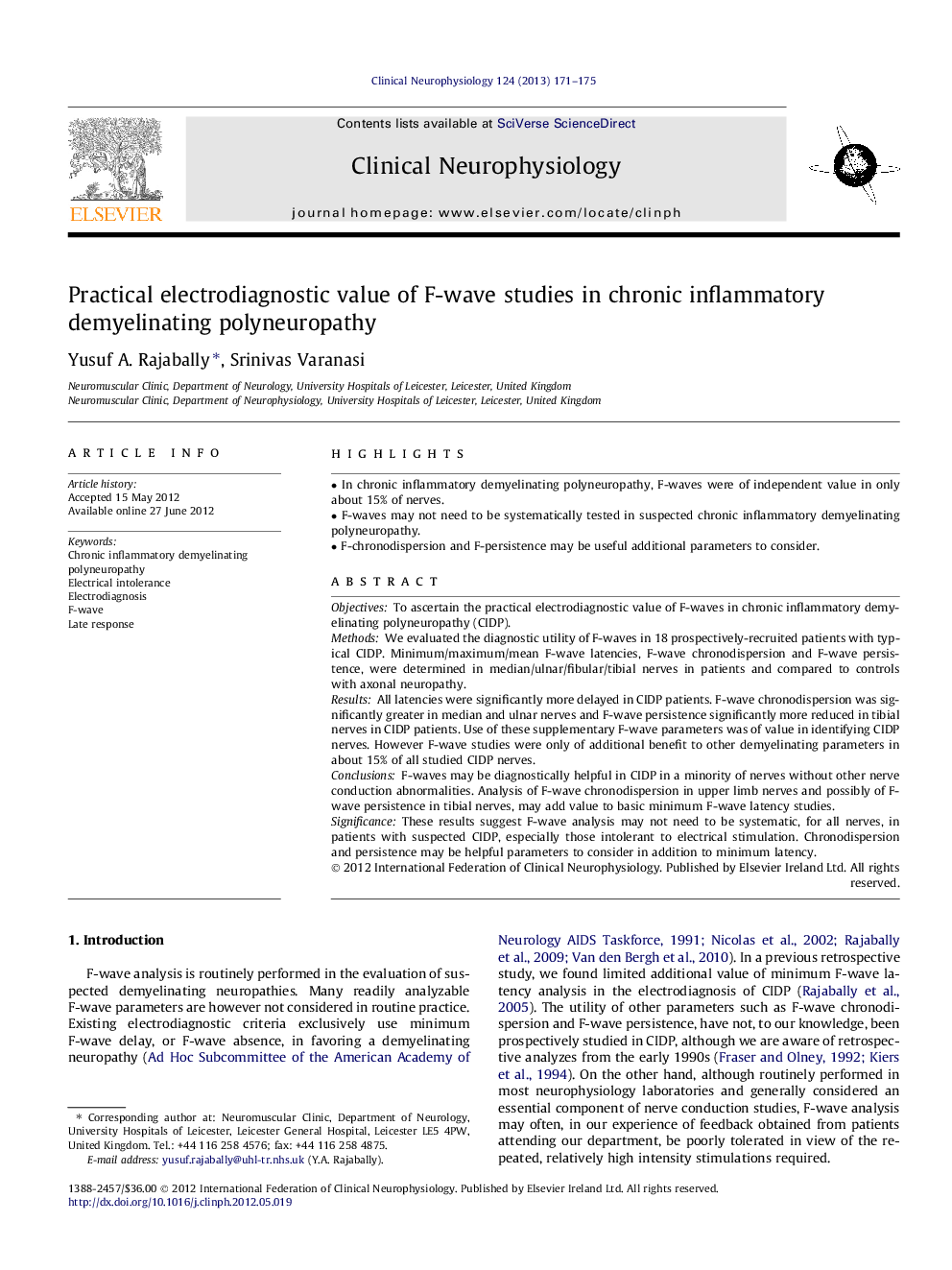| Article ID | Journal | Published Year | Pages | File Type |
|---|---|---|---|---|
| 3043047 | Clinical Neurophysiology | 2013 | 5 Pages |
ObjectivesTo ascertain the practical electrodiagnostic value of F-waves in chronic inflammatory demyelinating polyneuropathy (CIDP).MethodsWe evaluated the diagnostic utility of F-waves in 18 prospectively-recruited patients with typical CIDP. Minimum/maximum/mean F-wave latencies, F-wave chronodispersion and F-wave persistence, were determined in median/ulnar/fibular/tibial nerves in patients and compared to controls with axonal neuropathy.ResultsAll latencies were significantly more delayed in CIDP patients. F-wave chronodispersion was significantly greater in median and ulnar nerves and F-wave persistence significantly more reduced in tibial nerves in CIDP patients. Use of these supplementary F-wave parameters was of value in identifying CIDP nerves. However F-wave studies were only of additional benefit to other demyelinating parameters in about 15% of all studied CIDP nerves.ConclusionsF-waves may be diagnostically helpful in CIDP in a minority of nerves without other nerve conduction abnormalities. Analysis of F-wave chronodispersion in upper limb nerves and possibly of F-wave persistence in tibial nerves, may add value to basic minimum F-wave latency studies.SignificanceThese results suggest F-wave analysis may not need to be systematic, for all nerves, in patients with suspected CIDP, especially those intolerant to electrical stimulation. Chronodispersion and persistence may be helpful parameters to consider in addition to minimum latency.
► In chronic inflammatory demyelinating polyneuropathy, F-waves were of independent value in only about 15% of nerves. ► F-waves may not need to be systematically tested in suspected chronic inflammatory demyelinating polyneuropathy. ► F-chronodispersion and F-persistence may be useful additional parameters to consider.
